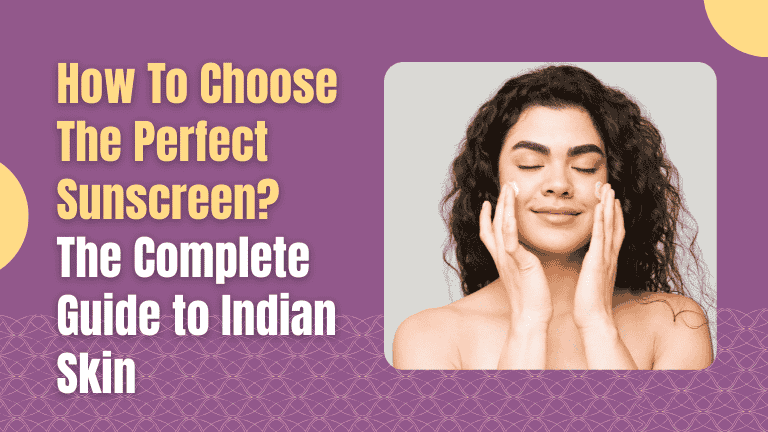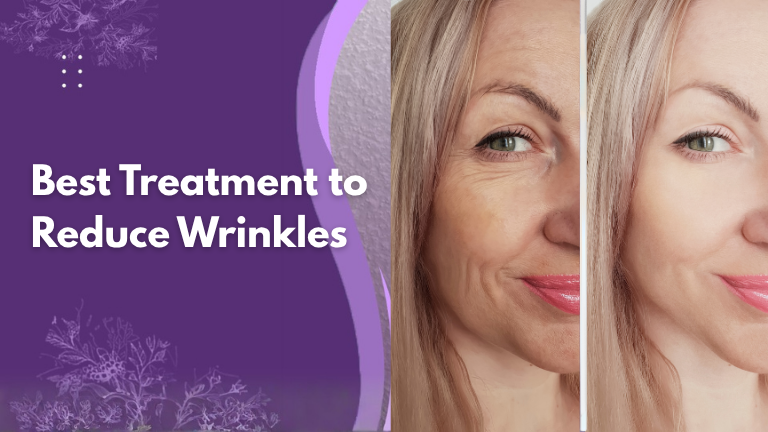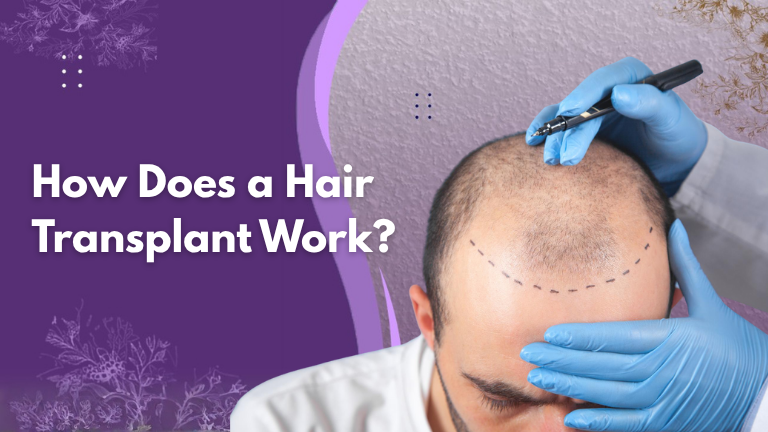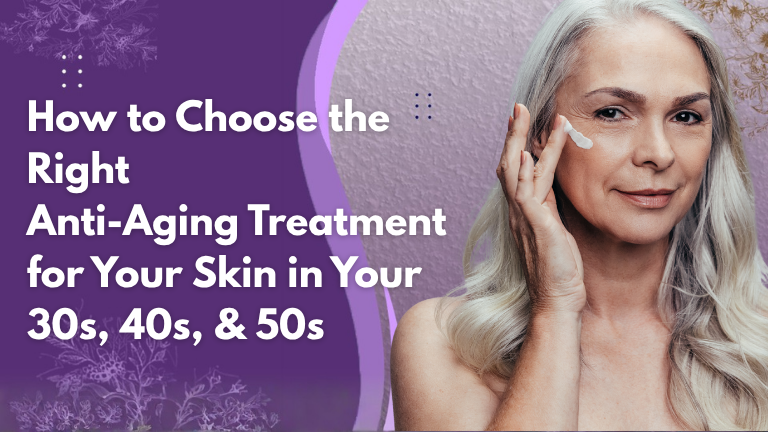If you reside in a location like India, where the sun shines mercilessly nearly every single day of the year, sunscreen is not a beauty essential but your skin guardian. You could be from the sea breeze heat of Mumbai, the dry weather of Delhi, or the sun-cloud mix of Bangalore; sun damage awaits, and it’s encircling all kinds of Indian skin. But then comes the boom of what’s available in the market—SPF 15 or SPF 50, PA++ or PA++++, gel or cream—and no wonder one gets bamboozled. So, how does one choose the right sunscreen for Indian skin?
Let me explain with simple, untechnical, and expert-validated answers in this question-and-answer book. That way, regardless of your skin type, colour, or day-to-day lifestyle, you’ll be certain and confident regarding your sunscreen choices.
What daily SPF should I be wearing in India?
In India, the sun shines powerfully throughout the year, especially from 10 a.m. until 4 p.m. SPF, which stands for Sun Protection Factor, tells you how long your skin will last when exposed to the sun without getting sunburned. SPF 30 protects you from remaining outside in the sun for 30 times longer than the bare minimum, at least theoretically. Indian climatic conditions need at least SPF 30, and SPF 50 would be best if you will remain outside for quite a few hours.
Daily use indoors or for just a short-term exposure (like going to the workplace), SPF 30 would suffice. However, for those going out to work, outing for shopping at the mall, college, or the gym, SPF 50 would be suitable. It gives you greater and longer-lasting protection. SPF 15 in moisturizers or foundations is not enough alone for Indian skin, especially if one needs to protect against skin pigmentation or tanning. So always choose a minimum of SPF 30, and remember, the application is much more than the figure.
What does PA+++ mean, and why is it so important for Indian skin?
In addition to SPF, you should also search for another figure: PA. Protection Grade of UVA rays is the term behind PA. SPF keeps out UVB rays (the ones that burn you), but PA ratings check how your sunscreen is performing versus UVA rays, which are more penetrating and cause wrinkles, darkening of the skin, and pigmentation.
The larger the number of “+”. PA+ is low, PA++ is medium, PA+++ is high, and PA++++ is the highest protection. Indian skin, which is more melanin-based, can cause melanin formation and resistant pigmentation, mottled coloration of the skin, or even worsen melasma on exposure to UVA rays.
Therefore, the choice of sunscreen with minimum PA+++ is very important. Even at home, indoors, UVA rays go through glass and windows. If you’re on your phone and computer all day, you’ll be surprised to learn they emit UVA rays. Investment in a good PA-rated broad-spectrum sunscreen is the secret to long-term skin.
Do dusky or darker complexions require sunscreen?
There is always this belief that dusky or darker skin does not need sunscreens since melanin causes means natural protection. Reality is that yes, melanin causes some resistance to sunburn, but by no full protection from UVA and UVB radiation. But Indian skin tones, whether whitish or dark brown, are prone to pigmentation, tanning, and mottled skin discoloration following sun exposure.
Besides that, blemishes and dark spots (wounds or acne) become darker when exposed to sunlight, whether with or without protection. Sunscreen inhibits such hyperpigmentation and works towards achieving an even skin tone. In addition, sunscreen shields skin from skin complications such as photoaging, sunburn, and even some forms of skin cancer. Sunscreen issues affect all persons, irrespective of skin tone type. So, sunburnt or not, you still require sunscreen to get your skin healthy and glowing.
Can sunscreen prevent pigmentation for Indian skin?
The most common skin problems among Indian men and women are pigmentation. It comes in the form of patches, tanning, dark spots, or melasma. Sunscreen cannot remove already formed pigmentation, but it is the most important factor in preventing pigmentation from becoming worse. It is most suitable for Indian skin, which secretes excess amounts of melanin and is highly sensitive to the radiation of the sun.
The primary reason for melanin release is UV light. So if you’re not wearing sunscreen, your skin is simply going to keep on secreting more and more pigment, and freckles are going to darken and become more visible. Using sunscreen every day, even when you stay indoors, averts that daily UV damage and lightens freckles on your skin gradually, especially when coupled with brightening products or treatments like vitamin C or kojic acid. Think of sunscreen as your general insurance for skin care, it keeps the progress on the skin and averts new problems from occurring.
Mineral vs chemical sunscreen: What’s best for Indian skin?
Sunscreens are either mineral (physical) or chemical. Chemical sunscreens let the UV radiation in, trap it, and release it as heat and radiate it away from the skin. They are likely to be lightweight and non-greasy and are appropriate to wear over makeup. Mineral sunscreens bounce back on your skin surface and stay there. Mineral sunscreens are likely to be titanium dioxide or zinc oxide and are appropriate for sensitive skin.
Both are Indian skin-friendly, depending on your skin type. If you have acne or oily skin, you may like a light chemical sunscreen with a gel consistency. If you have reactive or sensitive skin, mineral sunscreens are the way to go. The only ointment for flies is that mineral sunscreens do leave a white cast on darker skins—but the new technology in tint or micronized minerals neatly eliminates the problem.
If you want the best of the best, the hybrid sunscreens (mineral and chemical filters) are for you. The key is to find a product that balances well with your skin so that you apply it every day without exception.
What sunscreen is suitable for Indian acne-prone skin?
If you ever skipped sunscreen because it plugged up your pores, don’t worry—you’re not alone. Acne- or oily-skinned individuals steer clear of sunscreen for that precise reason. But the right formula won’t plug pores or break you out—actually, it will prevent post-acne pigmentation.
For sunscreens that are “non-comedogenic,” “oil-free,” and “fragrance-free.” Gel- or water-based sunscreens feel weightless and dry in an instant with no greasiness. Niacinamide, green tea, or zinc oxide are soothing ingredients for acne skin and offer a sunblock. Avoid heavy creams or scented products, alcohol, or oil. And don’t even consider not wearing sunscreen, a day of sunshine can darken up healing spots of acne and get you back on track. Once you’ve settled on your ideal sunscreen, it will even treat your acne scars faster and stop new ones from appearing.
How do I choose sunscreen during Indian heatwaves or rain?
Indian summers are brutal. Sun, sweat, and humidity cause sunscreen to stick to your skin and become vile. Texture is thus as important as SPF.
Go for light, sweat-proof textures that dry immediately and leave a matte finish. Gel, liquid, or water sunscreens are ideal for hot, humid days.
Spray sunscreens or powder sunscreens can even be used for day touch-ups in the event that you begin to sweat. When outdoors for long periods of time, use a water-resistant sunscreen and reapply 2–3 hours later. Don’t miss the ears, the back of the neck, and the hands those get sunburned too. In Indian summers, it’s not a question of applying sunscreen but applying sunscreen according to your lifestyle and comfort. 8. Prevention of white cast of sunscreen on brown skin
White cast is perhaps the most common complaint of sunscreen, especially in Indian skin. It typically happens with mineral sunscreens that just don’t cooperate with darker-complexioned skin. The good news is you don’t necessarily have to endure it.
For chemical or hybrid sunscreens with the terms “invisible,” “no white cast,” or “transparent.” There are a few new sunscreens that come in tinted form, which would be an ideal match for brown and dusky skin.
Alternatively, apply sunscreen thinly and mix well, and use a wet beauty sponge to pat it onto the skin, especially on dry patches. Avoid overly thick or chalky sunscreens unless you’re going for physical activity and don’t mind the look. With the right product and technique, your sunscreen should feel like a second skin.
Does sunscreen slow down ageing in Indian skin?
Yes! The best and most economical anti-ageing cream is probably sunscreen. Indian skin, being melanin-rich and slow to wrinkle, is extremely prone to photoaging—irregularity of texture and colour, and dullness due to UV radiation. UV light kills your skin’s elastin and collagen, which can lead to sagging, wrinkles, and dullness.
Sunscreen protects your skin from getting burned and keeps your skin looking smooth. And when you mix it with antioxidants like vitamin C or E in your morning routine, the impact is doubled. It’s premature to start using sunscreens as a preventive anti-ageing measure. Even if wrinkled, applying sunscreens will stop them from getting any worse. Do not wait until age 40 start now. Some of the sunscreens mistakes most Indians in India commit are that most Indians don’t apply sunscreen or abuse it. The worst fault is not putting enough of it- most apply it in minuscule teeny drops, which reduces its protective ability. Half a teaspoon is sufficient for his face and neck alone.
The second fault is that they neglect to reapply it. Sunscreen loses potency with sweat, water, and time.
Reapply 2–3 hours, particularly when outdoors. And everyone thinks that sunscreen comes out only in summer. In fact, UV rays are present everywhere at all times—on cloudy days, in winter, and indoors and in the car, without knowing that UVA rays pass through glass. And lastly, having SPF-containing products such as moisturisers or makeup is not enough. Those products just do not provide the protection unless applied liberally, which most of them are not. In order to provide your skin with an efficient covering, use a stand-alone sunscreen as a base coat in every situation.
Conclusion:
Sunscreen isn’t just a step in your routine, it’s your daily protection against tanning, pigmentation, premature aging, and long-term skin damage. With India’s intense sun and humid climate, using appropriate sunscreen daily is no longer a choice. With so many options available, it’s easier than ever to select one that suits your lifestyle, budget, and skin type.
Start with SPF 30 or SPF 50, look for PA+++, and make sure it is broad-spectrum. Select one that you enjoy putting on so that you will never skip it. Whether you are inside, outside at work, or on a beach trip, sunscreen is the only product that gets its job done behind the scenes to provide you with healthy, radiant, and youthful-looking skin.
FAQ
1. Can I skip sunscreen on rainy and overcast days, correct?
No, don’t skip it because you can’t see the sun. Even 80% of the UV rays are able to penetrate cloudiness, and they do go through your skin. Even in monsoons, UVA rays, which cause ageing and pigmentation, are around. So sunny or cloudy, the answer is sunscreen. Just brushing the teeth—a habit, not a weather’s one.
2. Do I need to reapply sunscreen if I’m working indoors full-time?
If you spend lots of time in front of windows or screens, reapplication is never worse than in the outdoors, but it is less. Indoor illumination, blue light from devices, and indirect light will still strike your skin even after the long term has passed. Reapplying every now and then in the afternoon will suffice.” If your indoor space is in complete shade and you are not spending excessive time in front of windows, a morning application should suffice.
3. Can kids and adolescents apply fragranced sunscreen?
Children 6 months and older can use sunscreen, but apply products for young or sensitive skin. Teenagers may apply adult sunscreens if starting to break out with acne or expecting to be outside for school or sports. Apply light, non-comedogenic products. Steer clear of alcohol- or fragranced products. A basic SPF 30–50 broad-spectrum sunscreen is sufficient.
4. Is sunscreen useful for tanning during the Indian summer?
Yes, sunscreen blocks tanning by blocking UV rays, specifically UVB, which causes direct sunburn and tan. No sunscreen can block 100% of the rays, and thus some tanning will always occur. Protective clothing for the skin, use of an umbrella, and staying in the shade also block it. Reapplying sunscreen very often is the trick to reducing tan build up. So yes, even though it may not stop tanning, it reduces it.
5. At what time of the day is sunscreen needed most?
Sunscreen is most important from 10 a.m. to 4 p.m. When the sun’s rays are most intense. That is when your skin is most susceptible to sun damage. But because UV rays are present before and after these periods, application of sunscreen every morning will work all day. Applying it in advance and reapplying as needed is safer than trying to catch the timing precisely. Better than best timing is consistency from day to day.




